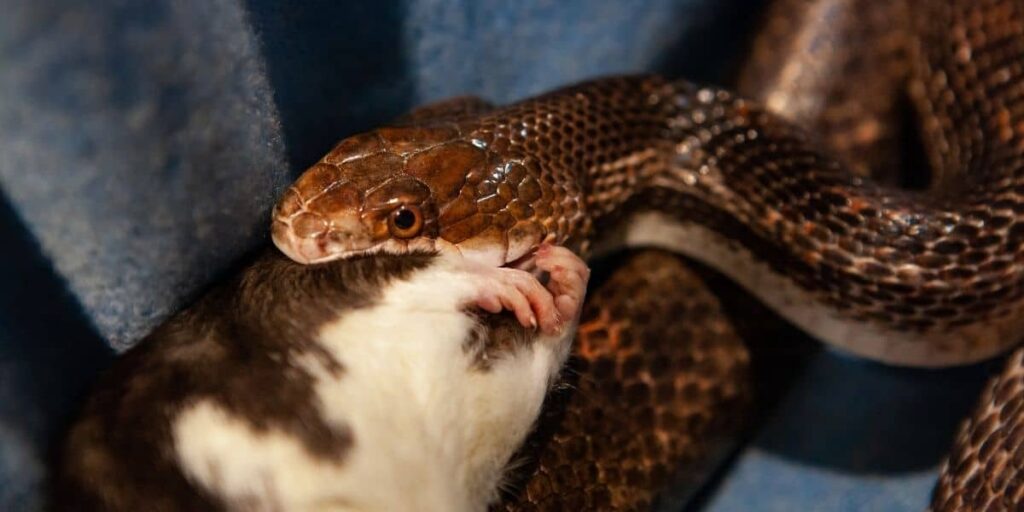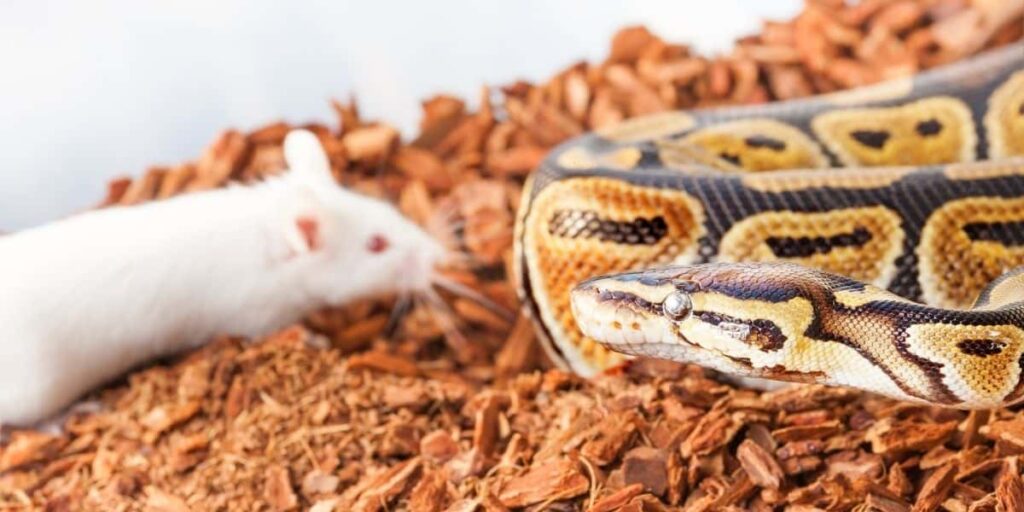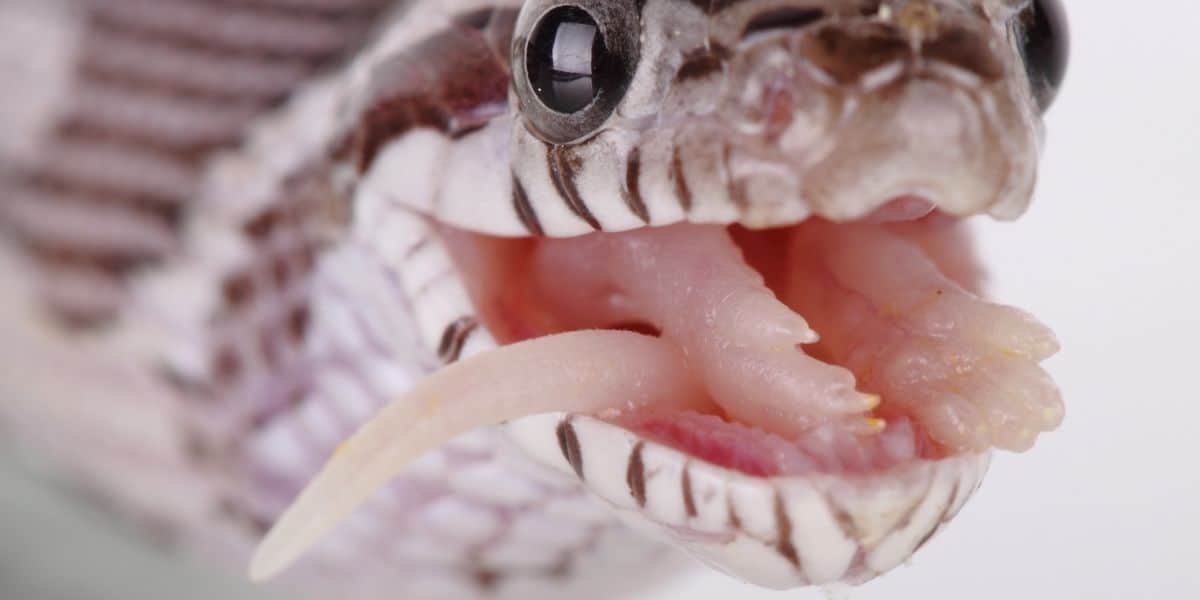There are more than 3000 species of snake in the world and more than 600 of these are considered to be venomous. Out of this huge number of slithery friends, many species can be successfully kept as pets.
But one of the most important parts of caring for a snake is that owners ensure their diet is as close to what they would eat in the wild as possible.
Pet snakes might eat a variety of different foods. All snakes are carnivorous, meaning that they eat a diet that consists entirely, or mostly, of meat. Depending on the species, your pet might eat insects and worms or he might prefer larger prey such as small rodents and frogs.
Before taking on a snake as a pet, you must make sure that you know exactly what your pet will eat. Doing this will ensure that they receive all the correct nutrients and thrive throughout their lives.
In this post, we will be talking about what you can offer to various pet snakes and discussing other important aspects of their diet.
Snake Diet
In the wild, snakes have access to a huge range of prey. You have likely heard horror stories of snakes eating whole deer and pigs; for some species, eating decent-sized animals is not unheard of.
However, in the main, the average snake will feast on warm-blooded mammals and rodents like mice, rabbits and rats. Some species also eat birds and it is very common for snakes to hunt for eggs, regardless of what might be inside.

These considerable sized snakes are able to swallow their prey whole using powerful muscles to move their food through the mouth, down the food tract and into the stomach.
You may have seen photos and videos of snakes in the wild with rather full tummies and this is because the snake doesn’t chew its food.
However, smaller species of snake would not be able to handle such large prey and while they do still swallow their food whole, they tend to feed on much smaller creatures.
This might include things like slugs, crickets, cockroaches, worms and even small frogs.
Feeding Your Pet Snake
One of the great things about being the proud owner of a snake is that getting their diet right is nowhere near as difficult as other pets.
Think about common household pets like dogs and cats; they must have a special mix of foods with just the right balance to make sure they get everything they need.
Conversely, feeding your pet snake doesn’t take a lot of guesswork where nutrition is concerned.
Providing them with whole animals, whether that is insects or warm-blooded creatures, is exactly what they would have in the wild so their natural diet is easily mimicked in captivity.
Offering foods such as whole rats or mice, which can be purchased at your local pet store will have everything that your snake needs to stay full, healthy and happy.
Size
A good rule of thumb is that the prey should be no wider than the widest point of the snake’s head.
Of course, one of the first things that you need to do is determine which type of food your snake prefers. This information will typically be given to you by the breeder when you purchase your snake.
One thing that is important to keep in mind is that there is a limit to the ideal size of the prey. Many people are under the false impression that snakes can dislocate their jaws to feed on large prey; but this is not the case.
What really happens is that snakes can open their mouth very wide but it has been noted by scientists that snakes might have eyes bigger than their bellies. It is not unheard of for a snake to die from trying to tackle prey that is far too big for it.
For this reason, you should always make sure to offer foods that are relative to the size of your pet.
How Often Should I Feed My Snake?
While humans require several meals a day to stay healthy, snakes are quite different. There cannot be a clear answer to the question of how often you should feed your snake simply because each snake is different.
However, you can rest assured that you won’t need to feed you pet every day.

In the wild, there are some snakes that can go for weeks at a time without eating; these are typically older snakes. The average length of time between meals for a wild snake can be anywhere between one and two weeks.
In captivity, you will need to offer food to your snake as part of a routine. For juvenile snakes, more frequent meals may be needed. You might need to give them a meal twice a week. However, as your snake gets older, they will have fewer meals between every one to two weeks.
How Do I Know If My Snake Is Hungry?
One of the best ways to know when your snake needs feeding is to simply offer him a meal. If he responds well and takes the food, then he was ready to eat. In contrast, if he rejects the food, you should remove it and try again another time.
Getting into a routine is a good way of making sure that your snake has regular meals but of course, animals can be unpredictable and so your routine may not always go to plan. Therefore, it can be helpful to learn the signs that your pet is getting peckish.
Usually, a hungry snake will start to prowl his enclosure as he would in the wild when he was looking for food. You might also notice that he flicks his tongue more frequently; this behaviour would help him to seek out prey in the wild.
Live Prey
There are a lot of snake enthusiasts that swear by offering live food to their snake. However, there are several reasons that this might not be the best idea.
Let’s first clarify that yes, live food would perfectly replicate the hunting situation that your snake would have found himself in had he been a wild animal.
But, if the snake is not hungry and doesn’t eat the food immediately, there is a chance that a small rodent could deliver a painful bite to your beloved pet.
Not only this but a lot of people are concerned about the welfare of the prey and feel that allowing the snake to hunt it is inhumane. This is something of a personal opinion, however.
It is always best to offer pre-killed prey for the safety of your pet, above all else and this is readily available in most exotic pet stores around the world.
However, some pet owners find that even with dead prey, they find it difficult and upsetting to feed this to their snakes. If this is the case, it might be that a snake is not the right pet choice for you.
While it is understandable that some people find it difficult, it would not be fair for the snake if they were not able to access their much-needed natural diet.
Conclusion
Snakes are a common household pet and thousands of people across the globe form strong connections with their snakes. One of the most crucial parts of their care is providing them with a healthy and nutritious diet.
Different snakes eat different foods but they are all carnivores. Larger species might eat rabbits, mice, rats and frogs whereas smaller species may prefer insects, slugs and worms. All snakes love eggs, of course, you must make sure that they are a suitable size for your pet.





